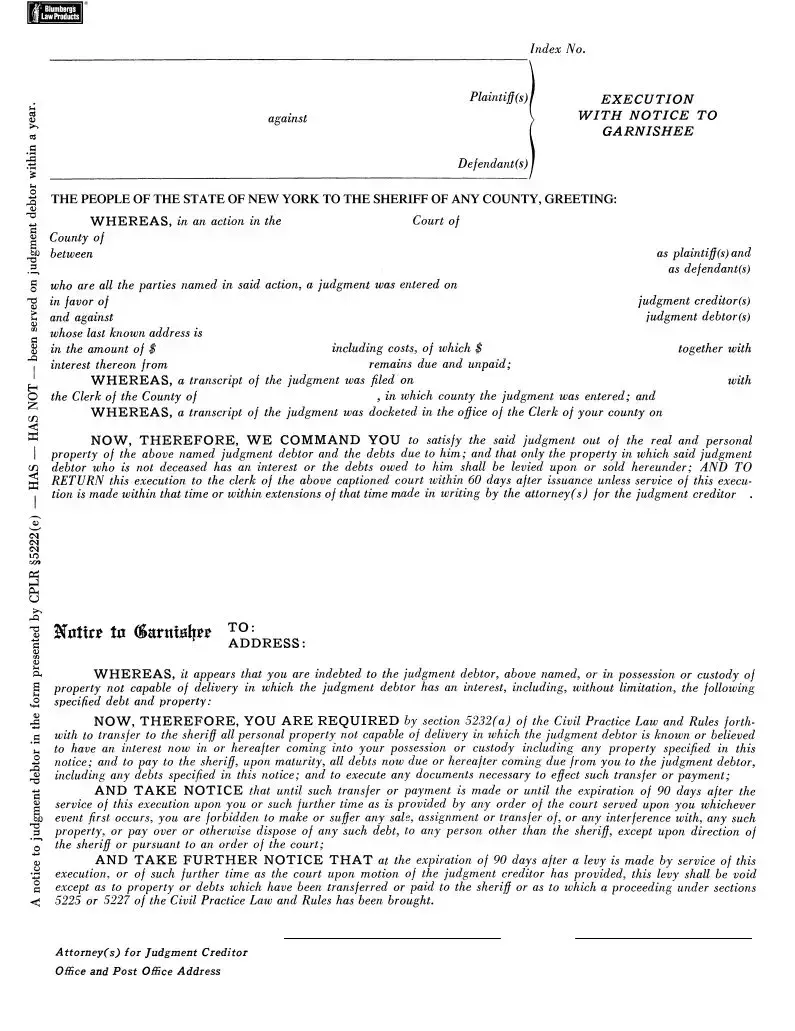Instructions on Utilizing Blumberg 120
Filling out the Blumberg 120 form requires careful attention to detail. This form is essential for executing against a property in a legal context. Ensure all information is accurate to avoid delays in processing.
- Obtain the Form: Download the Blumberg 120 form from the official Blumberg website or acquire a physical copy.
- Fill Out the Heading: Provide the court name, the index number, and the county where the action is filed. Write "Execution Against Property" at the top of the form.
- Identify the Parties: Enter the names of the plaintiff(s) and defendant(s). Make sure to include the judgment debtor's full name and address.
- Garnishee Information: Include the name and address of the garnishee—the third party who may hold the debtor's property or assets.
- Location of the Property: Indicate the specific location of the property being executed against.
- Signature and Date: Sign the form and print your name below the signature. Include the date of signing.
- Endorsement Section: Note any defendants who have not been served with a summons. Clearly indicate the execution limitations for these individuals.
- Review the Form: Check all entries for accuracy. Ensure there are no missing details or mistakes.
- Make Copies: Create sufficient copies of the completed form as instructed, including an original and an office copy, plus two copies for both the debtor and garnishee.
- Submit the Form: File the completed form with the sheriff's office in the relevant county.

